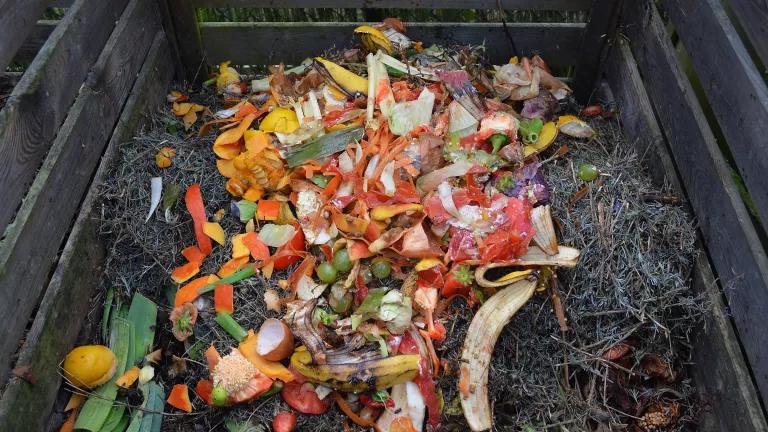When rain runs off impervious surfaces such as sidewalks, streets, and roofs, it collects a wide range of toxic pollutants, which are then dumped, usually untreated, into local waterways. With older "combined" sewer systems, the problem is exacerbated because stormwater pipes join with wastewater pipes, sending the polluted runoff and wastewater from sinks and toilets into our waterways. Many cities are taking steps to reduce stormwater runoff through large-scale "green" stormwater infrastructure (GI) solutions, including street trees, rain gardens, vegetated swales, porous pavement, and green roofs. These practices keep polluted stormwater on or near the site where the rain falls -- and out of waterways -- until it can be treated, evaporate back to the atmosphere, be used onsite, or filter into the ground to benefit vegetation and replenish groundwater supplies.
Most cities' GI plans include modifications to existing paved space on public properties and in the public right-of-way such as streets and sidewalks. Private property, however, is also a substantial contributor to stormwater runoff, and satisfying water quality requirements will often necessitate controlling pollution from public and private property. In addition, stormwater management opportunities can be less expensive on private land than on public land.
Stormwater Credit Trading Taps the GI Potential of the Private Sector
The most common and straightforward way for cities to realize some of the GI potential of private land is by requiring on-site stormwater retention as a condition of construction permit approval for projects above a certain size. The concept of "stormwater credit trading" typically arises within this context. Credit trading programs enable property owners who are subject to an on-site retention requirement to meet a portion of their requirements by buying stormwater "credits" from other property owners rather than building all needed GI on their own property.
Stormwater credit trading programs present an attractive option for cities that want a flexible option to enlist the private sector in meeting water quality goals. Moreover, a regulatory system that allows a portion of the retention to be met off site can decrease pollution and flood risk just as well as or even better than a retention rule requiring 100 percent on-site retention. Allowing for some portion of retention to happen offsite generates a larger number of smaller stormwater management practices (SMPs) which, in comparison to a smaller number of larger SMPs, help distribute the ecological, social, and human health co-benefits of GI throughout a watershed (an area that drains into a common waterbody or waterway) and capture more stormwater annually.
However, credit-trading markets can be substantially more costly for local governments to establish and administer than simple on-site retention requirements. Due to lack of resources, many local governments may need to outsource credit-trading market design, administration, and enforcement to external firms. Thus, local governments must decide whether the potential benefits of a credit trading program are worth the added costs. Additionally, local governments must work with the local stakeholders likely to be impacted by these regulations to ensure that they are feasible, understandable, and fair.
Optimal design of stormwater credit-trading programs will vary greatly based on local physical conditions, populations, economic drivers, and water quality needs. After weighing the costs and benefits, if a local government decides that a credit-trading program is desirable, adhering to number of principles in program design will be critical to ensuring success in terms of both maximizing water quality and delivering the co-benefits of GSI to residents. This issue brief provides additional background on stormwater credit trading and lays out some of the potential risks and opportunities presented by such programs.
Conclusion
Stormwater credit trading programs can be a valuable addition to a city's water quality compliance strategy. They provide a measure of flexibility in on-site retention rules, and can actually provide equal or better water quality outcomes compared to a simple on-site retention rule. Cities should carefully consider the opportunities and limitations in the local geography and study whether the rate of development is projected to create enough of a market to merit the costs of program startup and ongoing administration. Ultimately, however, the details of the credit trading program such as prohibiting trading across watersheds, credit banking, and limiting the lifetime of a credit, will determine whether the program helps or hinders local water quality goals.




